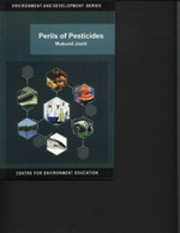8 - Eco-friendly Approaches to Pest Control
Published online by Cambridge University Press: 26 October 2011
Summary
Pest control need not be achieved by the use of synthetic pesticides alone. Many other methods of pest control were recognized well before the first synthetic pesticide was used. Many more non-chemical and biological methods have been added in the last 15-20 years. All these methods are termed as eco-friendly approaches. Such approaches are eco-friendly because they recognize the natural balance between living organisms and cause no damage to the ecosystem. It is necessary to know clearly the limitations of synthetic pesticides, before eco-friendly approaches can be discussed.
Limitations of Synthetic Pesticides
Synthetic pesticides were invented, manufactured and used in various formulations with the sole aim of killing pests, rendering them dysfunctional or repelling them. But such actions cannot be independent and exclusive of complex interactions in an ecosystem, because pests are an integral part of an ecosystem. An ecosystem is characterized by macro-components such as air, water, soil, fauna and flora along with several mutual interactions among them, as well as micro-level considerations like population dynamics, ecological evolution, survival mechanisms of organisms, adaptability factors and resistance mechanisms. Perhaps it was an oversimplified expectation of the early users of synthetic pesticides that a target pest alone can be killed by a designated chemical, without any effect on the ecosystem. Such notions were found in research articles till recently. Even today, many entomological research programmes fail to recognize pests as an inseparable part of an ecosystem.
- Type
- Chapter
- Information
- Perils of Pesticides , pp. 83 - 94Publisher: Foundation BooksPrint publication year: 2005



